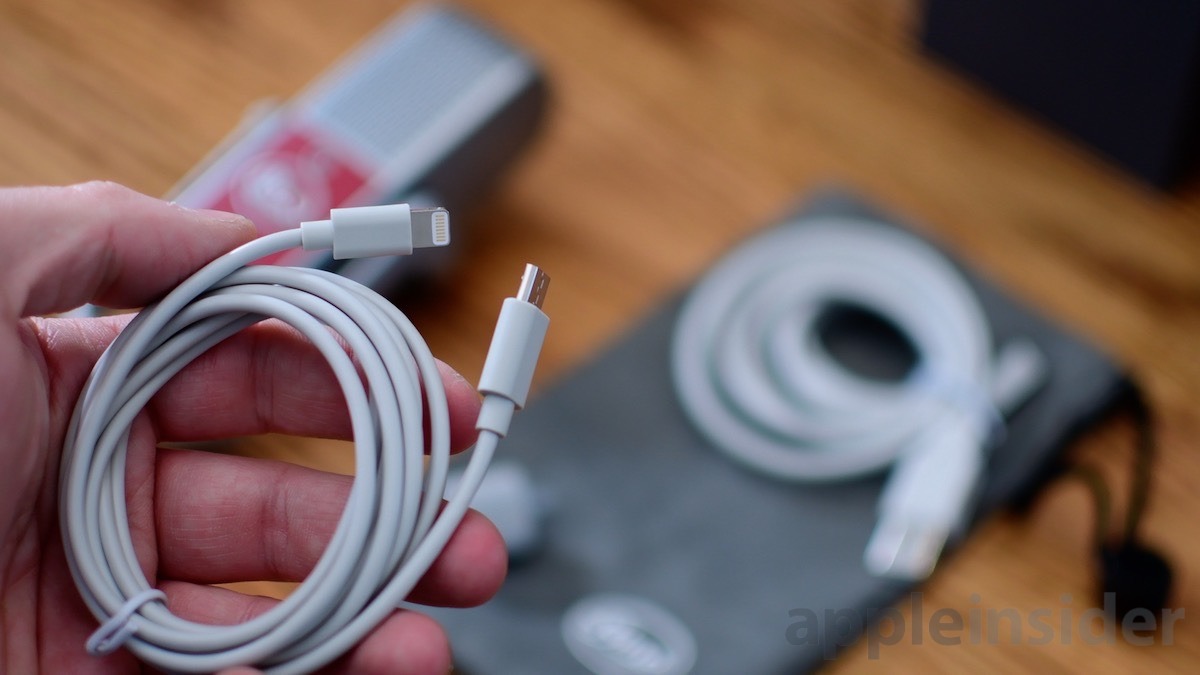The Raspberry microphone from Blue is more than your average recording device. It folds up into a portable bundle for using on the go, and can even work with your iOS device.
We've only spent a brief amount of time with Raspberry, and it is already one of our favorite mics. There are a few things to celebrate about the Raspberry. Namely, its design, portability, versatility, and quality.
Design
Following deboxing, the first thing we noticed about the Raspberry was its excellent design and build quality. It is solid feeling and largely made of metal.
The bottom of the mic itself is wrapped in a dark red leather that comes about halfway up the front and back. This serves as not only scratch protection, but as a modicum of sound dampening from vibrations like computer cooling fans and the like.
A green light in the center signifies when it has power, though we found this to be a bit on the bright side.
The only bits of plastic happen to be the two knobs located on either side. The knobs felt a bit loose to us, like they could be more precise in their rotation.
Portability
It is a good thing that the mic is made primarily of metal because this mic is perfect to take on the go.
It has a removable and collapsible stand that can fold up around the mic itself, making it super compact and sturdy for tossing into luggage. After folding it up, we could fit it into our pocket when we are heading to an event. We wouldn't say it is super-comfortable lodged in there, especially when trying to sit, but it is doable in a pinch.
If you have ever tried to travel with a mic, you know the pain it can be. The mic, mic stand, pop screen, cables, all are necessities and the Raspberry helps with nearly all of that.
Versatility
Raspberry connects to a computer over USB. There is a micro USB port on the back of the mic, and the included cable is quite long.
Even better, especially on the go, is that it can connect to an iOS device. A second micro USB to Lightning cable is included to allow it to be plugged it into an iPhone or iPad. This frees up so many more options and lets professional audio be recorded on the go on to go with just a small mic and a phone.
Audio quality
Clearly one of the most important things for a mic is audio quality. It can be portable, pretty, and versatile but if it sounds terrible, it is no use to anyone.
Luckily, at least in our quick tests, it sounds fantastic. We compared it to a few other studio mics ranging from $150 to $300 and the Raspberry sounded as good as nearly all of them. Very impressive for such a small device.
Depending on the app used on your Mac, PC, or iOS device, Raspberry can record in up to 24-bit audio.
We will most definitely be diving into this more for our full review.
Where to buy
Blue Raspberry retails for $199, though B&H and Amazon currently have the microphone for $149. For that price, it includes the mic, two cables, and a portable travel bag. B&H is currently shipping the Blue Raspberry for free via expedited delivery with no tax outside NY and NJ (CO and VT, see here), while Amazon is temporarily out of stock, but accepting backorders.
Stay tuned for our upcoming full review and comparison once we've had a bit more time to try out this impressive mic.
 Andrew O'Hara
Andrew O'Hara












-m.jpg)






 Charles Martin
Charles Martin


 Wesley Hilliard
Wesley Hilliard
 Stephen Silver
Stephen Silver
 William Gallagher
William Gallagher

 Marko Zivkovic
Marko Zivkovic








16 Comments
This piece left two rhetorical questions drifting around in my head:
Why are manufacturers still using Micro-USB connectors instead of moving to USB-C?
If a $200 USB device is a "studio mic," what nomenclature do we use to describe a Schoeps CMC6 or Neumann U67?
How does this compare to a $200 dynamic XLR microphone with an XLR to USB adapter cable?
I may have missed it but what's the power source? Internal batteries? USB Powered? I wonder because I have a USB powered mic and have been told repeatedly that to use it with my iPhone or iPad I would need to use a powered USB hub. The reason given was that iOS devices can't power things.